This year seems to be the one where multiple SIBlings headed to the state of Texas to bird this spring. Eileen and I set out on Easter, March 31, 2024, for Texas at the same time that Judy Morr and Jennifer Jerome where birding in Texas. They started in San Antonio but were soon at the coast and worked their way down the coast and up the Rio Grande and around to the Edwards Plateau near San Antonio. We started our trip in Rio Frio, TX within the Edwards Plateau and worked our way around to the coast. Since we drove and had to pass through several states, of course, as one drives from state to state, one must stop and look for birds.
Our first stop was in Florida where we heard that a rare South American Gray Gull was being seen. We gave it a couple hours, but the bird pulled a no-show.
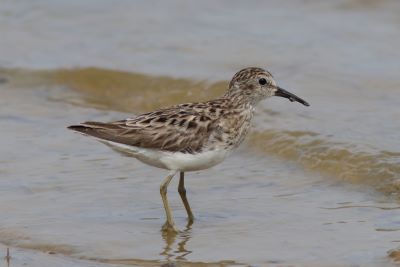
Our next stop was along the Gulf Coast of Louisiana. We did find some nice birds, mostly shorebirds like this very cooperative Least Sandpiper. While the yellow legs clinch this id, note the length and shape of the bill. There was nothing that we would not see later on the trip.
While in Port Aurther, TX for the night, we decided we had some time to spare, so we made a short side trip (4 hours) to Corpus Christi, TX to see the Cattle Tyrant reported feeding off flies at a dumpster enclosed within a walled off area behind a downtown restaurant. Is showed up briefly and we got a good look, but I did not have my camera. After retrieving my camera, we stood around for more than a half hour hoping the bird would show up again.
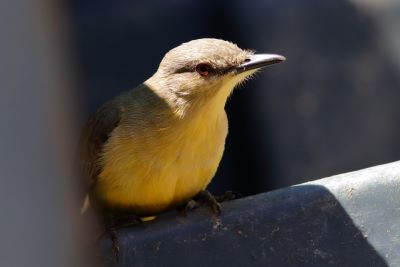
While we stood in the parking lot, an employee came out, and dumped some trash in the dumpster. Coming out, he said, “That yellow bird is inside of the enclosure. About 10 people trapsed into the cramped quarters, peeked around the dumpster, and sure enough the Cattle Tyrant happily ignored the slicking cameras as it snapped flies out of the sky with lightning speed.
After a couple of non-birding days, enjoying San Antonio, we set off for our primary destination, the town of Leakey and cabins on the Rio Frio River.
The first bird we heard upon our arrival at the Rio Frio Cabins, Merlin identified as a Tropical Parula, a potential life bird for me. The entire time we were at Rio Frio the bird sang and sang, but never showed itself. Merlin, as trustworthy as it is, alternated the identification between Northern Parula and Tropical Parula. In Texas, Tropical Parulas are considered a rare nester and Northern Parula is a migrant. The entire time we were in Rio Frio, this singing parula moved from tree to tree in a small area as if it were defending a territory, not acting like a migrant at all. No lifer for me unless I can confirm the id with a visual.
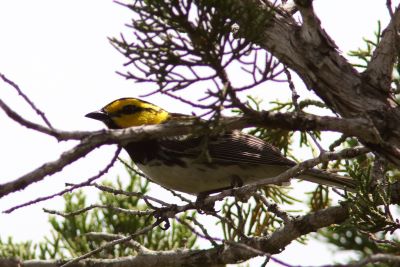
We did spend a day in Los Maples and did find both the Golden-cheeked Warbler and Black-capped Vireo, both species endemic to the Edwards Plateau of Texas. There was also a confirmed Tropical Parula at Los Maples, but we could not find it.
Over a year earlier, we chose Rio Frio, TX as our primary destination as there was 70% chance of clear skies for the eclipse on April 8, 2024, and Rio Frio was located almost dead center of the path, ensuring the maximum time to enjoy the eclipse. When we got there, the forecast was for primarily cloudy.
The day of the eclipse, the sky was mostly cloudy with occasional breaks. As the eclipse nibbled away at the sun, we would get short breaks where we could see the crescent of the sun growing smaller. A minute before totality, a dark cloud crept over the face of the sun, totally obliterating our view. We were low on hope that the heavy cloud would break within the 4 minutes and 30 seconds of totality.
We all considered ourselves blessed as twice during the 4.5 minutes of totality, the clouds thinned and gave us maybe 30 seconds to enjoy the total blockage of the sun by the moon’s shadow. Far better than being completely wiped out!

The next day, we headed for the Rio Grande Valley, essentially doing in reverse what Judy and Jennifer did, ticking off a similar list of birds including some of the exact same birds like the Elf Owl (a lifer) and Morelet’s Seedeaters (a lifer for my North American list).
Once in the Rio Grande Valley, we visited numerous great birding locations like Benston State Park, Santa Anna National Wildlife Refuge, and South Padre Island. Frustratingly for us, we had a knack for showing up at the location where a rare bird had been reported up until the day before we arrived. We dipped (birder slang for missing) on 3 potential life birds. Despite missing some rarities, we had some great birds we would not see in South Carolina. Images from top left to bottom right: Altamira Oriole, Couch’s Kingbird, Fulvous-whistling Duck, Great Kiskadee, Green Kingfisher, Groove-billed Ani, Harri’s Hawk, Ladder-backed Woodpecker, Buff-bellied Hummingbird, Green Jay, Inca Dove, Greater Roadrunner, Least Grebe, Long-billed Thrasher, Olive Sparrow, Pyrrhuloxia, and Chachalaca.
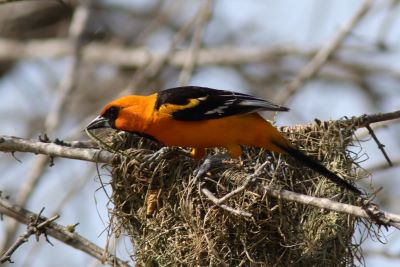
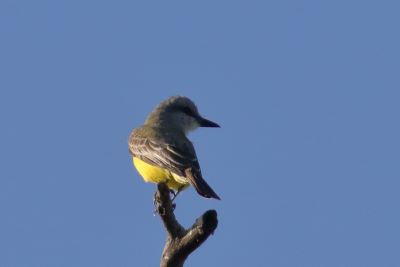



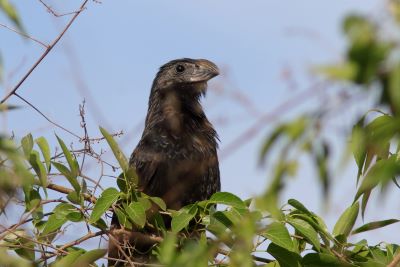
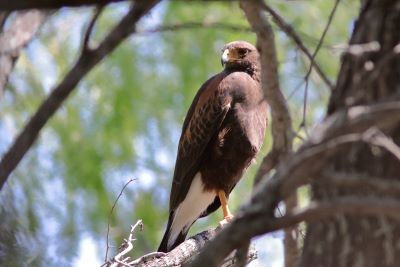
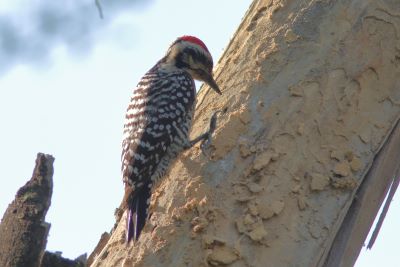

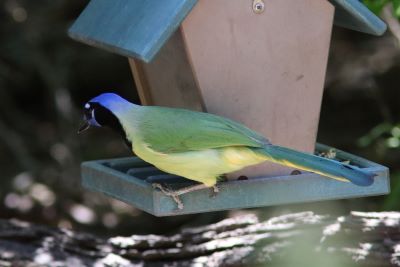

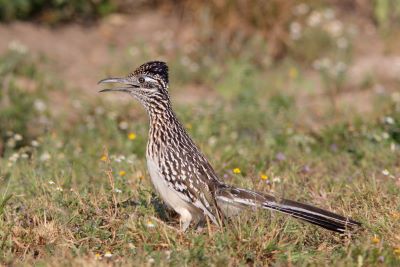


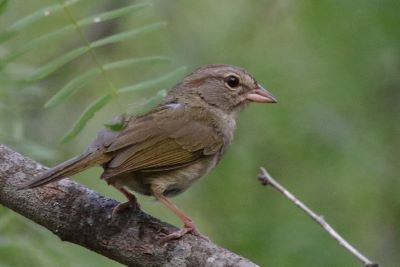


While in McAllen, TX, we decide to spend some time at Quinta Mazatlan, a small nature center located just blocks from the house we rented. As we walked from the parking lot, a car pulled up and Jackie Brooks asked, “What are you doing here.” In that huge state, we managed to cross paths with the other SIBlings visiting Texas. For a week before our visit to Quinta Mazatlan, a Flame-colored Tanager was hanging out. It was last seen the day before we arrived. The Center still provided some great birds and an opportunity to visit with Jackie and Walter.
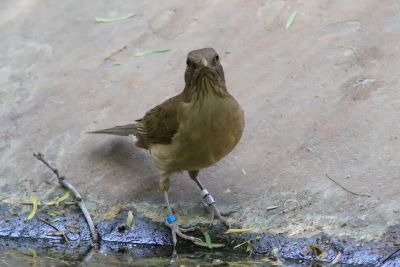
We also found some Clay Colored Thrush, a species normally found in Central America. At Quinta Mazatlan, they are studying this species and can tell each individual bird by the bands on their legs.
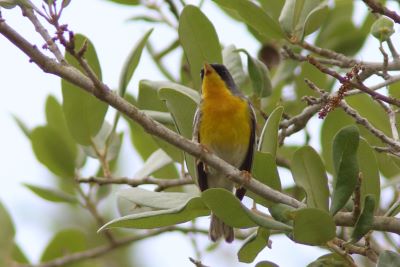
One place Eileen and I visited was the King Ranch Noria Division. The King Ranch is made of three major parcels of land totaling more acreage than the state of Rhode Island. Their nine-hour guided tour took us through a “small” portion of their ranch.

The target birds there were, Tropical Parula (above) and Ferruginous Pygmy-Owl. We were able to find both. I finally could count my Tropical Parula lifer. Note the absence of the black bib and yellow much farther down the belly.
After leaving the King Ranch, we started a slow return trip home, stopping to bird in Bolivar Flats and High Island, TX and also in the Great Smoky Mountains NP.
We finally arrived home on April 23, 24 days after leaving South Carolina. During that time, we managed 54 ebird lists scoring 242 species of which I got photos of 88 species. If you want to see more of them than posted here, you need to go to my profile in ebird and review my photos. Those of you who know me, may know that I keep different life lists. One for the small portions of the whole world I have visited, one for birds seen in North American and Hawaii (ABA lifers), and a third list of birds I have reported on ebird (birds identified since I retired in 2016). This being my third trip to the Rio Grande and the second to the Edwards Plateau, I added 1 world lifer, 3 ABA lifers, and 13 ebird lifers. The elf owl was my 700th ABA lifer, a nice benchmark bird. Great fun!
Submitted by Bob Mercer
Photos by Bob Mercer
